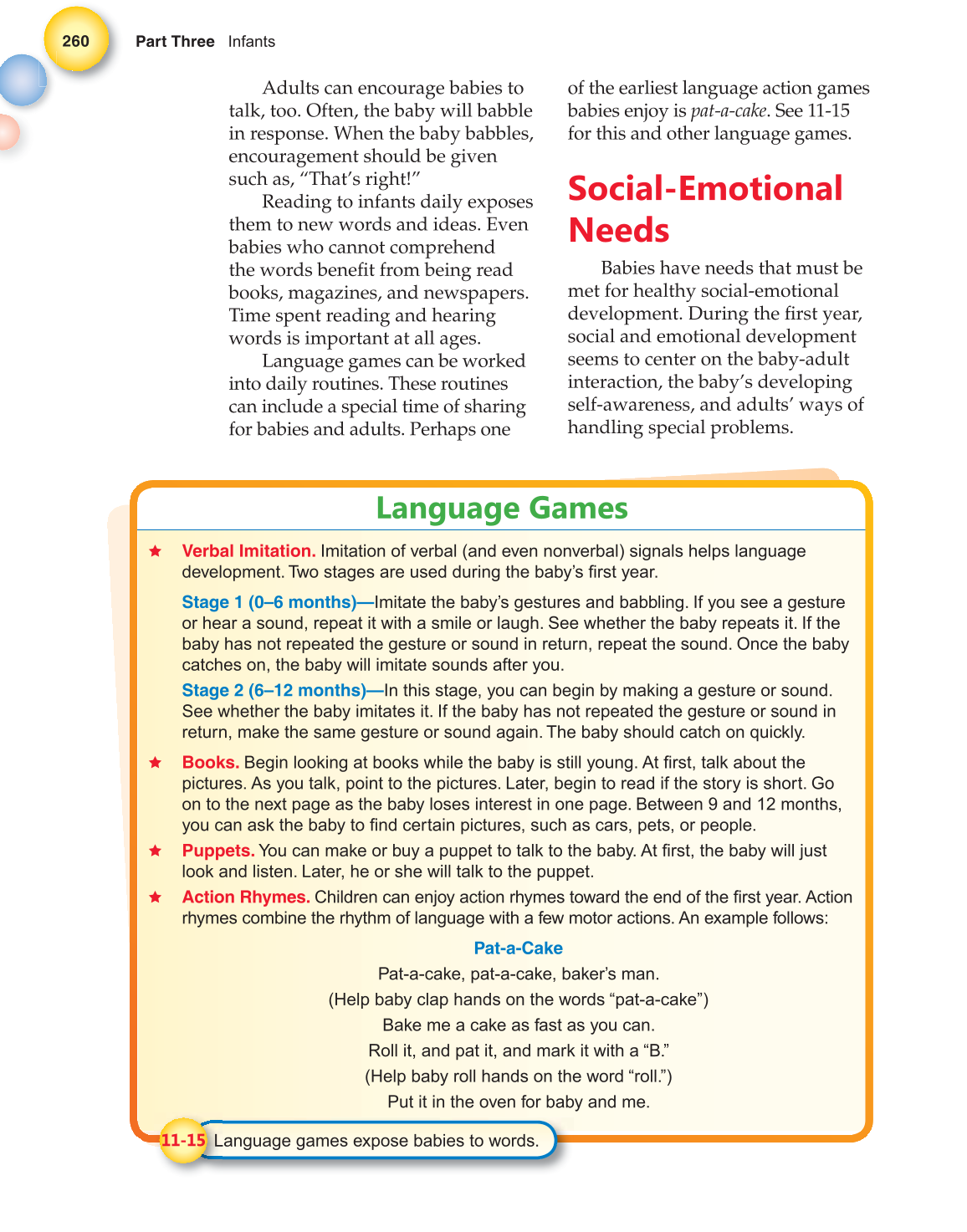260 Part Three Infants
Adults can encourage babies to
talk, too. Often, the baby will babble
in response. When the baby babbles,
encouragement should be given
such as, “That’s right!”
Reading to infants daily exposes
them to new words and ideas. Even
babies who cannot comprehend
the words benefi t from being read
books, magazines, and newspapers.
Time spent reading and hearing
words is important at all ages.
Language games can be worked
into daily routines. These routines
can include a special time of sharing
for babies and adults. Perhaps one
of the earliest language action games
babies enjoy is pat-a-cake. See 11-15
for this and other language games.
Social-Emotional
Needs
Babies have needs that must be
met for healthy social-emotional
development. During the fi rst year,
social and emotional development
seems to center on the baby-adult
interaction, the baby’s developing
self-awareness, and adults’ ways of
handling special problems.
Language Games
Verbal Imitation. Imitation of verbal (and even nonverbal) signals helps language
development. Two stages are used during the baby’s fi rst year.
Stage 1 (0–6 months)—Imitate the baby’s gestures and babbling. If you see a gesture
or hear a sound, repeat it with a smile or laugh. See whether the baby repeats it. If the
baby has not repeated the gesture or sound in return, repeat the sound. Once the baby
catches on, the baby will imitate sounds after you.
Stage 2 (6–12 months)—In this stage, you can begin by making a gesture or sound.
See whether the baby imitates it. If the baby has not repeated the gesture or sound in
return, make the same gesture or sound again. The baby should catch on quickly.
Books. Begin looking at books while the baby is still young. At fi rst, talk about the
pictures. As you talk, point to the pictures. Later, begin to read if the story is short. Go
on to the next page as the baby loses interest in one page. Between 9 and 12 months,
you can ask the baby to fi nd certain pictures, such as cars, pets, or people.
Puppets. You can make or buy a puppet to talk to the baby. At fi rst, the baby will just
look and listen. Later, he or she will talk to the puppet.
Action Rhymes. Children can enjoy action rhymes toward the end of the fi rst year. Action
rhymes combine the rhythm of language with a few motor actions. An example follows:
Pat-a-Cake
Pat-a-cake, pat-a-cake, baker’s man.
(Help baby clap hands on the words “pat-a-cake”)
Bake me a cake as fast as you can.
Roll it, and pat it, and mark it with a “B.”
(Help baby roll hands on the word “roll.”)
Put it in the oven for baby and me.
11-15 Language games expose babies to words.
